Andrew P. Creagh
Synthesizing Mixed-type Electronic Health Records using Diffusion Models
Feb 28, 2023
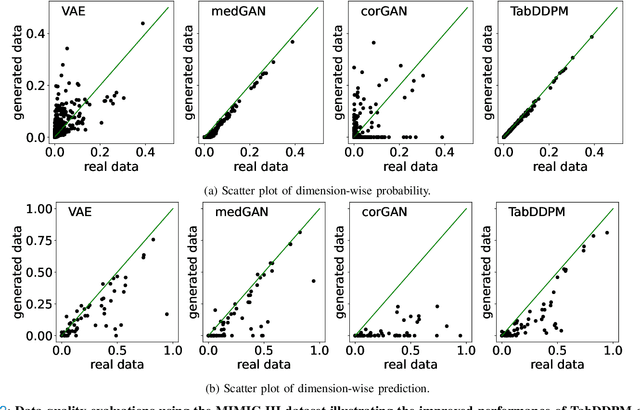


Abstract:Electronic Health Records (EHRs) contain sensitive patient information, which presents privacy concerns when sharing such data. Synthetic data generation is a promising solution to mitigate these risks, often relying on deep generative models such as Generative Adversarial Networks (GANs). However, recent studies have shown that diffusion models offer several advantages over GANs, such as generation of more realistic synthetic data and stable training in generating data modalities, including image, text, and sound. In this work, we investigate the potential of diffusion models for generating realistic mixed-type tabular EHRs, comparing TabDDPM model with existing methods on four datasets in terms of data quality, utility, privacy, and augmentation. Our experiments demonstrate that TabDDPM outperforms the state-of-the-art models across all evaluation metrics, except for privacy, which confirms the trade-off between privacy and utility.
Mixture of Input-Output Hidden Markov Models for Heterogeneous Disease Progression Modeling
Jul 24, 2022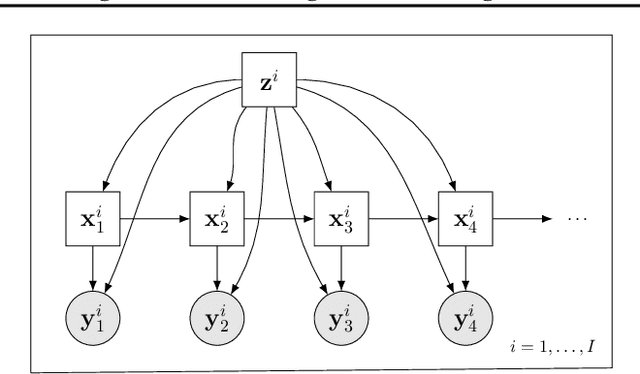
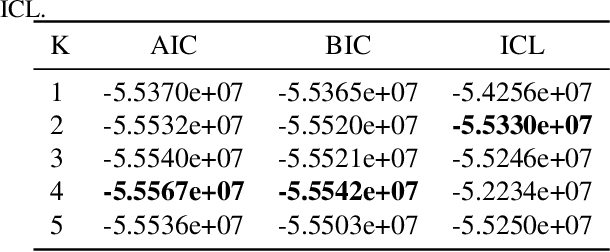
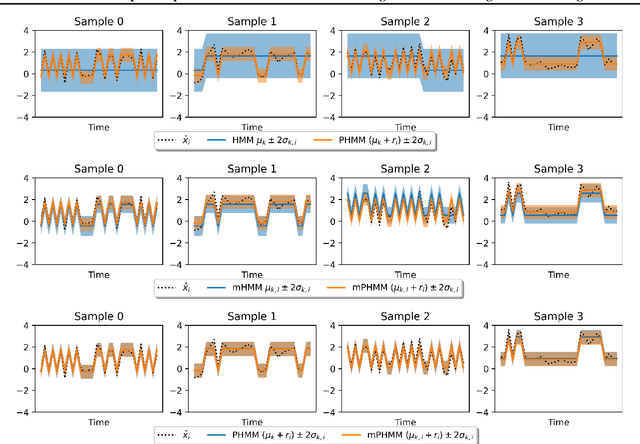

Abstract:A particular challenge for disease progression modeling is the heterogeneity of a disease and its manifestations in the patients. Existing approaches often assume the presence of a single disease progression characteristics which is unlikely for neurodegenerative disorders such as Parkinson's disease. In this paper, we propose a hierarchical time-series model that can discover multiple disease progression dynamics. The proposed model is an extension of an input-output hidden Markov model that takes into account the clinical assessments of patients' health status and prescribed medications. We illustrate the benefits of our model using a synthetically generated dataset and a real-world longitudinal dataset for Parkinson's disease.
Self-supervised Learning for Human Activity Recognition Using 700,000 Person-days of Wearable Data
Jun 06, 2022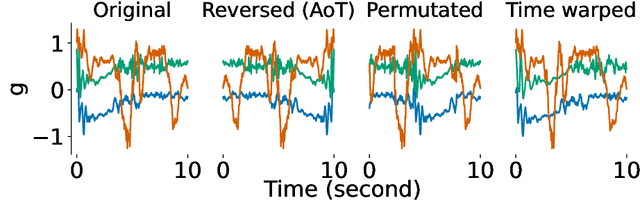

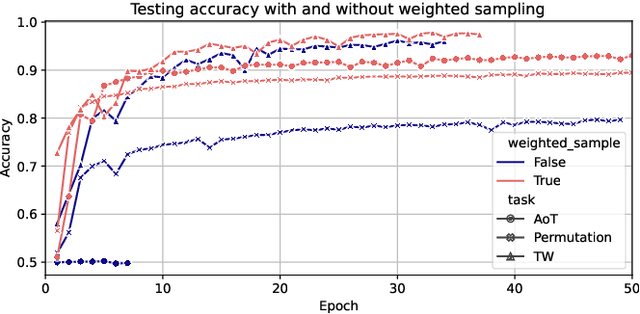
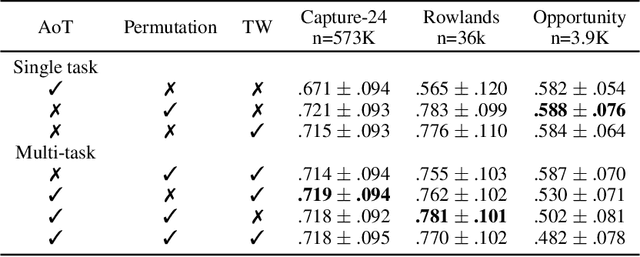
Abstract:Advances in deep learning for human activity recognition have been relatively limited due to the lack of large labelled datasets. In this study, we leverage self-supervised learning techniques on the UK-Biobank activity tracker dataset--the largest of its kind to date--containing more than 700,000 person-days of unlabelled wearable sensor data. Our resulting activity recognition model consistently outperformed strong baselines across seven benchmark datasets, with an F1 relative improvement of 2.5%-100% (median 18.4%), the largest improvements occurring in the smaller datasets. In contrast to previous studies, our results generalise across external datasets, devices, and environments. Our open-source model will help researchers and developers to build customisable and generalisable activity classifiers with high performance.
Interpretable Deep Learning for the Remote Characterisation of Ambulation in Multiple Sclerosis using Smartphones
Mar 16, 2021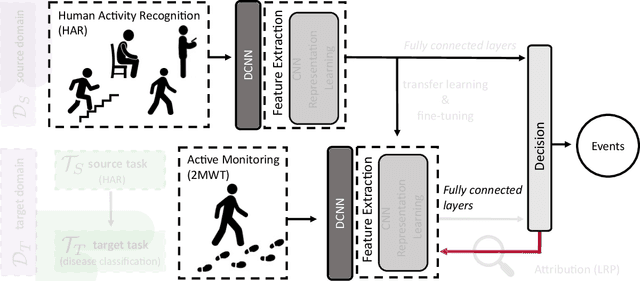
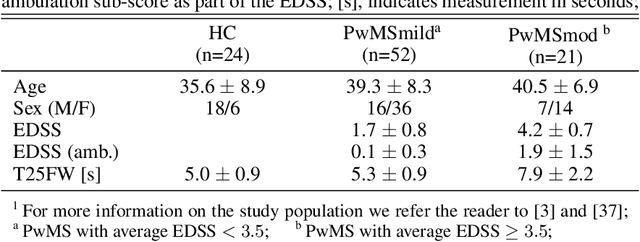

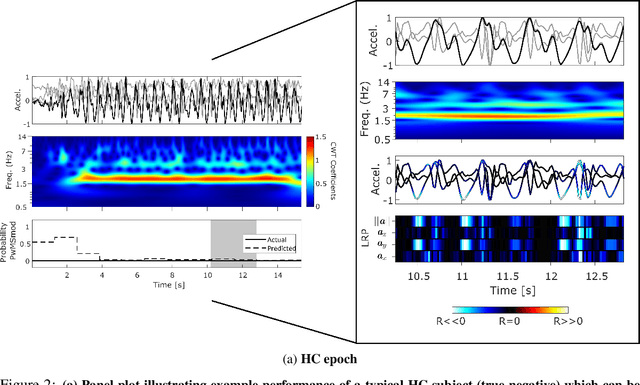
Abstract:The emergence of digital technologies such as smartphones in healthcare applications have demonstrated the possibility of developing rich, continuous, and objective measures of multiple sclerosis (MS) disability that can be administered remotely and out-of-clinic. In this work, deep convolutional neural networks (DCNN) applied to smartphone inertial sensor data were shown to better distinguish healthy from MS participant ambulation, compared to standard Support Vector Machine (SVM) feature-based methodologies. To overcome the typical limitations associated with remotely generated health data, such as low subject numbers, sparsity, and heterogeneous data, a transfer learning (TL) model from similar large open-source datasets was proposed. Our TL framework utilised the ambulatory information learned on Human Activity Recognition (HAR) tasks collected from similar smartphone-based sensor data. A lack of transparency of "black-box" deep networks remains one of the largest stumbling blocks to the wider acceptance of deep learning for clinical applications. Ensuing work therefore aimed to visualise DCNN decisions attributed by relevance heatmaps using Layer-Wise Relevance Propagation (LRP). Through the LRP framework, the patterns captured from smartphone-based inertial sensor data that were reflective of those who are healthy versus persons with MS (PwMS) could begin to be established and understood. Interpretations suggested that cadence-based measures, gait speed, and ambulation-related signal perturbations were distinct characteristics that distinguished MS disability from healthy participants. Robust and interpretable outcomes, generated from high-frequency out-of-clinic assessments, could greatly augment the current in-clinic assessment picture for PwMS, to inform better disease management techniques, and enable the development of better therapeutic interventions.
 Add to Chrome
Add to Chrome Add to Firefox
Add to Firefox Add to Edge
Add to Edge